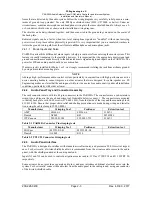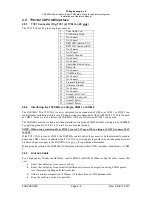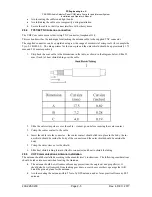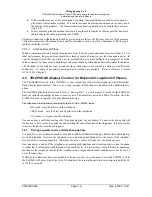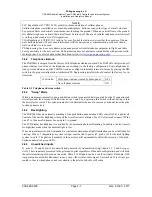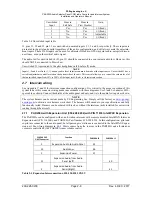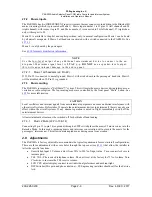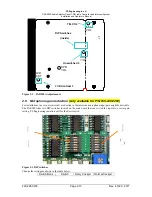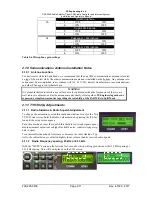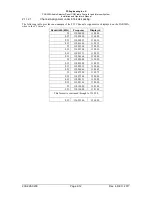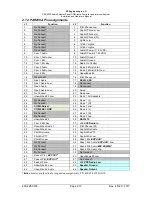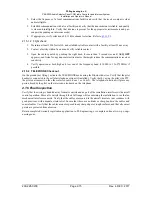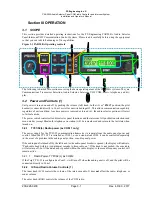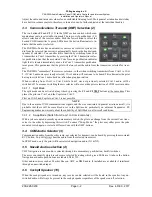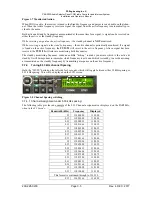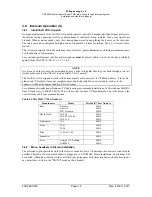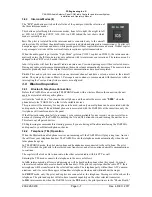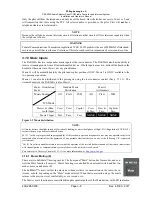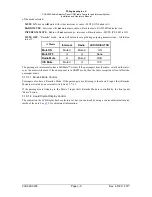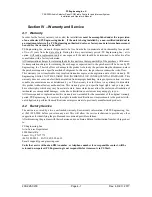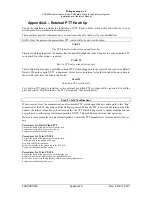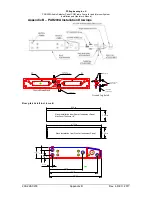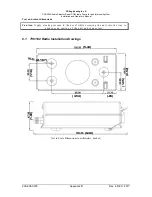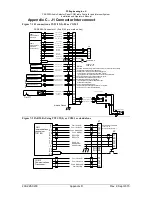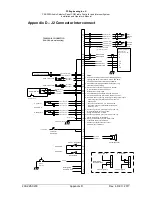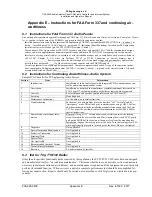
PS Engineering Inc. ®
PAR200A Audio Selector Panel, COM radio Controller and Intercom System
Installation and Operator’s Manual
200-228-0200
Page 3-2
Rev. 4, DEC. 2017
Adjust the radio and intercom volume for a comfortable listening level. Most general aviation headsets today
have built-in volume controls; therefore, volume also can be further adjusted at the individual headset.
3.3 Communications Transmit (XMT) Selection (2)
The two buttons
C1
and
C2
(# 2) in the XMT section control which com-
munications radio is selected for transmit. The top row of pushbuttons (# 3)
allows selection of the receiver audio. Push the lower button to select the
desired COM transmitter. A green LED above the button illuminates to in-
dicate that the audio is selected.
The PAR200A-Series has an automatic com receiver selector system. Au-
dio from the selected transceiver is automatically heard in the headsets and
speaker (if selected). You can check this function by switching from Com
1 transmitter to Com 2 transmitter by pressing the C
OM
2 transmitter selec-
tor pushbutton. See that the associated Com 2 receive pushbutton indicator
light that is located immediately above the Com 2 transmitter pushbutton
turns green. This guarantees that the pilot will
always
hear the audio from the transceiver selected for trans-
mit.
The PAR200A “remembers” the receiver selection, so that when switching transmitters from C
OM
1 to C
OM
2, if C
OM
2 audio was previously selected, C
OM
1 audio will continue to be heard. This eliminates the pilot
having to switch Com 1 audio back on, after changing transmitters.
When switching from C
OM
1 to C
OM
2 while Com 2 was not previously selected, C
OM
1 audio will be
switched off. In essence, switching the mic selector will not override prior selection of COM receiver audio.
3.3.1.1
Split Mode
The split mode can be activated at any time by pressing the
C1
and
C2
XMT
buttons at the same time. This
places the pilot on C
OM
1 and the Copilot on C
OM
2.
Pilot on C
OM
2 and Copilot on C
OM
1 is not possible.
N O T E
Due to the nature of VHF communications signals, and the size constraints in general aviation aircraft, it is
probable that there will be some bleed-over in the Split mode, particularly on adjacent frequencies. PS
Engineering makes no warranty about the suitability of Split Mode in all aircraft conditions.
3.3.1.2
Swap Mode (Switch from Com 1 to Com 2 remotely)
With a yoke mounted, normally open momentary switch, the pilot can change from the current Com trans-
ceiver to the other by depressing this switch. To cancel "Swap Mode," the pilot may either press the yoke
mounted switch again, or select a different Com with the XMT buttons.
3.4 COM Audio Selector (3)
Communication audio from the other radio, not selected for transmit, can be heard by pressing the associated
RCV button. You will always hear the audio from the selected transceiver.
In SPLIT mode, only the pilot will hear selected navigation audio (N1 & N2).
3.5 Navaid Audio selection (4)
VHF Navigation receiver audio is selected through two momentary, push-button, backlit switches.
The users can identify which receivers are selected by noting which green LEDs are lit above the button.
Navigation aid audio push buttons are labeled N1 & N2.
Other audio sources such as Marker Beacon, ADF or DME audio if installed are available if interfaced
through an unswitched input.
3.6 Cockpit Speaker (10)
When the cockpit speaker is turned on, any receiver audio selected will be heard in the speaker. Any un-
switched audio will always be present in the cockpit speaker regardless of the speaker on/off selection.

